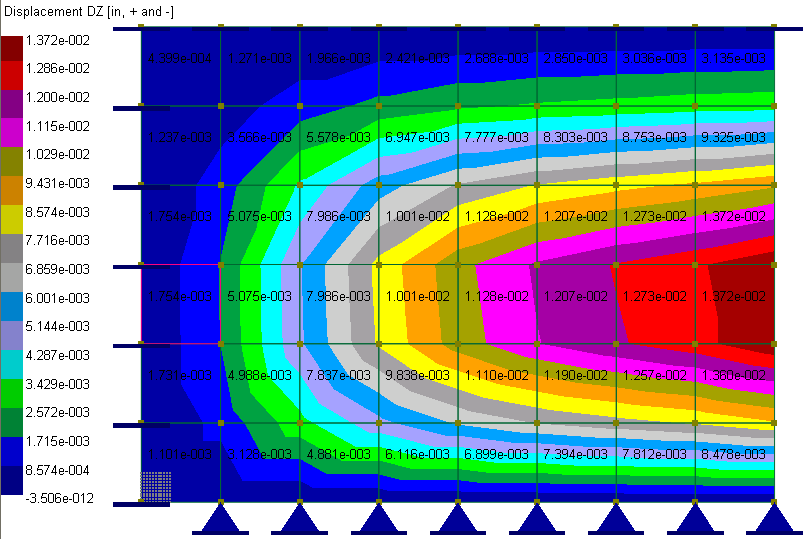Analysis Results > Contour Diagram prompts you with the following dialog.

It allows you to view a result contour for shells and/or bricks for the selected load combination.
Four display modes are available. They are Iso-Surface and Value, Iso-Surface only, Value only, None or Erase. The Iso-Surface provides color bands for the contour component in different ranges. The number of ranges (or colors) may be either 16 or 8. Either top or bottom stresses may be specified for plate/shell elements. The Value (the absolute maximum) of the contour component may be shown for each element. The contour may be displayed in colors or gray scale. The latter is useful for people with color-impaired visions.
The contour components include:
•nodal displacements (Dx, Dy, Dz, Dox, Doy, and Doz)
•shell bending moments (Mxx, Myy, Mxy) and shears (Vxx, Vyy)
•shell membrane normal forces (Fxx, Fyy) and in-plane shears (Fxy)
•shell and brick stresses (Sxx, Syy, Szz, Sxy, Sxz, Syz)
•surface spring reactions (SRx, SRy, SRz)
•shell principal moments (Mmax, Mmin) and shear (Vmax)
•shell principal membrane forces (Fmax, Fmin)
•principal stresses (S1, S2, S3) for shells and bricks
•Von Mises stresses for shells and bricks
Only one contour component for the selected load combination may be displayed per window. However, you may display different contour components in multiple windows. To open a new window, click Settings & Tools > New Window.
Four different modulations may be applied to values of the contour component. They are “Positive and Negative”, “Absolute”, “Positive Only”, “Negative Only”. For example, you may choose the contour component “Mxx” and the modulation “Negative Only” to view only the negative moments Mxx of the plates.
The following screen capture shows a displacement (Dz) contour for a plate, with display mode “Iso-Surface and Values” and value modulation of “Positive and Negative”.
